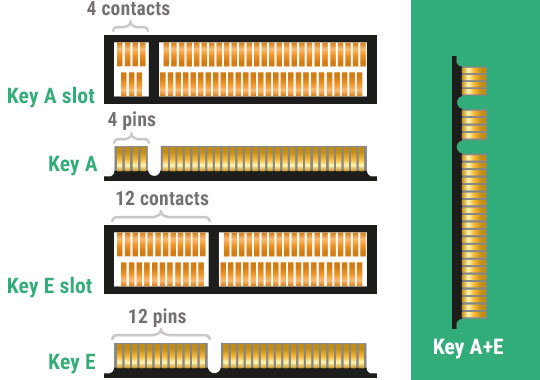this post was submitted on 26 Aug 2024
80 points (94.4% liked)
Technology
59373 readers
8318 users here now
This is a most excellent place for technology news and articles.
Our Rules
- Follow the lemmy.world rules.
- Only tech related content.
- Be excellent to each another!
- Mod approved content bots can post up to 10 articles per day.
- Threads asking for personal tech support may be deleted.
- Politics threads may be removed.
- No memes allowed as posts, OK to post as comments.
- Only approved bots from the list below, to ask if your bot can be added please contact us.
- Check for duplicates before posting, duplicates may be removed
Approved Bots
founded 1 year ago
MODERATORS
you are viewing a single comment's thread
view the rest of the comments
view the rest of the comments

Be very wary of the staggered pins in the diagram. I don't trust the diagram.
Thank you for your input! I can't tell if the diagram was made poorly or if M.2 does use staggered pins.
I'm not entirely sure myself with current tech, but when we got our first external adapter for SSD drives for MacBooks, the connector was made so sloppy that you'd literally have to manually make sure it was aligned properly in the slot.
There was like half a millimeter of slop in the slot where if you inserted it incorrectly, everything would lose its magic smoke..
You seem to love spreading misinformation on the web. Why are you commenting 4 times if you are not familiar with the topic?
This is an m.2 connector. You have to secure it with a screw on the other side. It's nearly impossible to mess it up.
Apple frequently uses proprietary connectors, I don't know which one you are reffering to. I won't guess because I'm not very familiar with all apple connectors.
You don't have to comment on a topic if you are not familiar with. Please stop.
Why is the diagram incomplete? It shows both sides of the socket, but only one side of the card. Are the pins really staggered like that?
I never trust incomplete diagrams, and I'm not finding a proper diagram that shows both sides to confirm or deny anything.
It's a strange diagram but shows what you have to know. If you ever seen different keyed m.2 cards, you should understand this. The important thing is the location of the keys, the notch. All m.2 cards has an 'up' and 'down' side, it shows only the 'up' side. You have to look inside the receptor to see the pins, that's why it shows both sides, it's not possible to see one side only on the receptor as they are in a plastic casing. Usually you can't see the pins on the mobo, only the key.
You can see a similar diagram on wikipedia, both sides of receptor, top side of card:
The offset you were writing about doesn't matter, it actually helps. You can't accidentally insert the card upside down. The location of notches also help with this, as not all possible notches used yet, but in the future it could change.
These connectors are really small. The receptor is similar how sodimm connector works, but smaller. Are you also afraid about inserting a ram in an laptop? It's basically the same.
Read more about the connector in wikipedia, I'm really happy this slowly replaces sata, msata, mpcie and even pcie in current pcs.
https://en.wikipedia.org/wiki/M.2